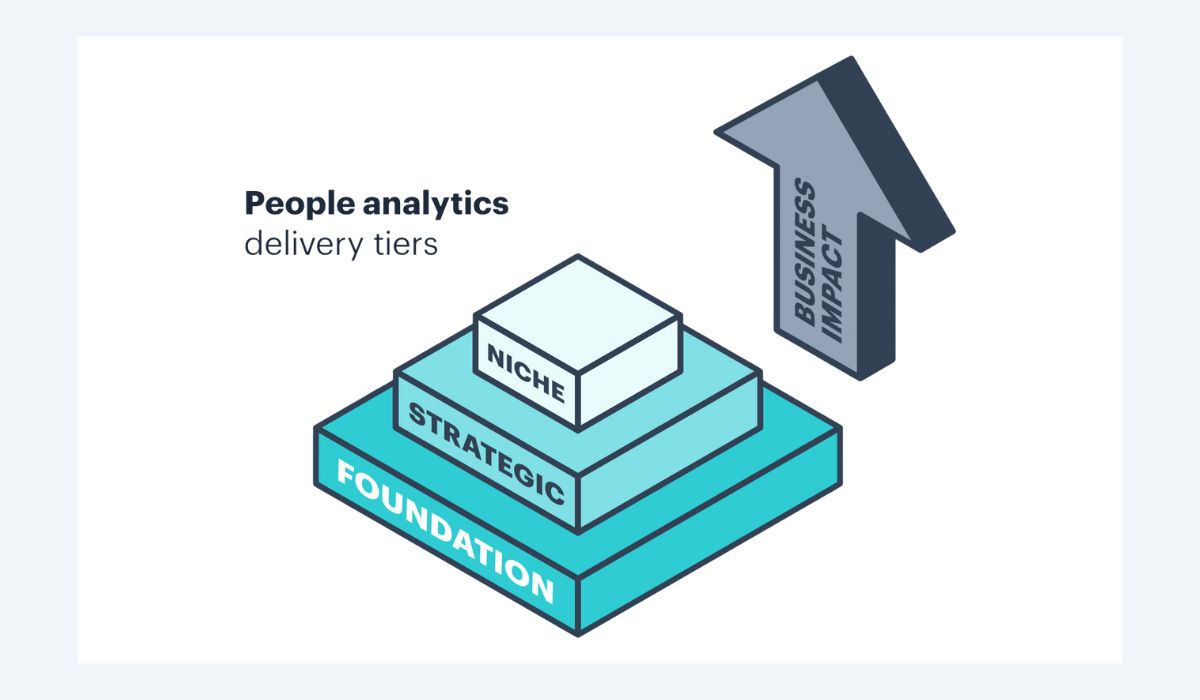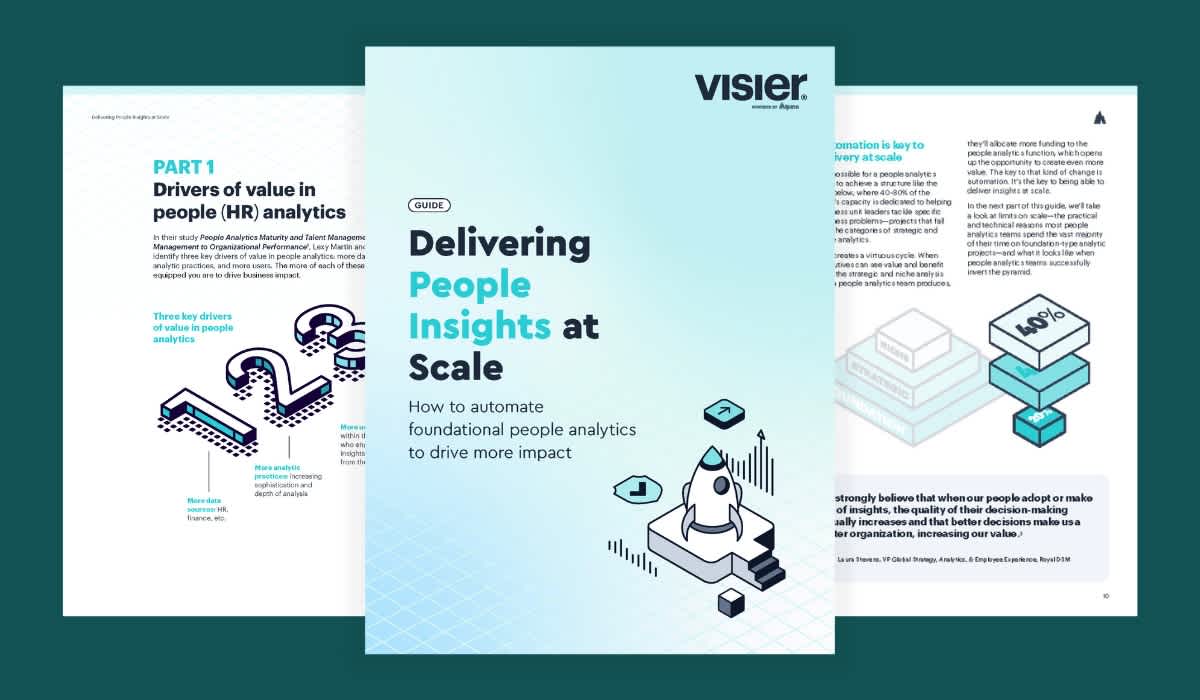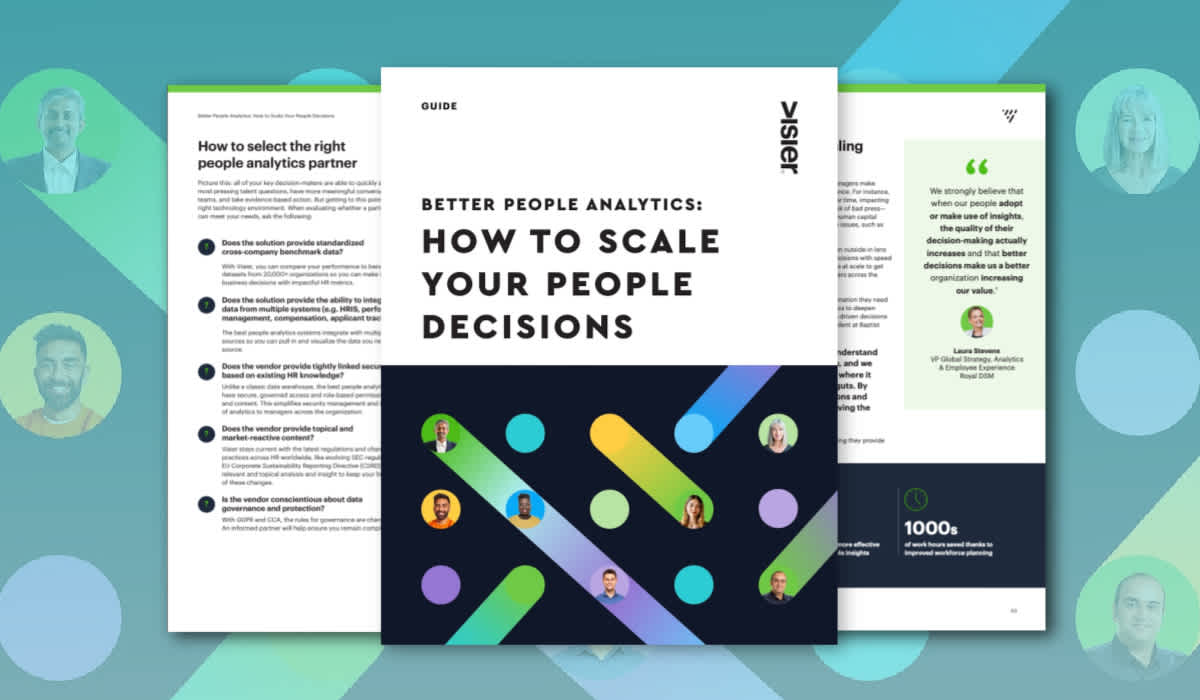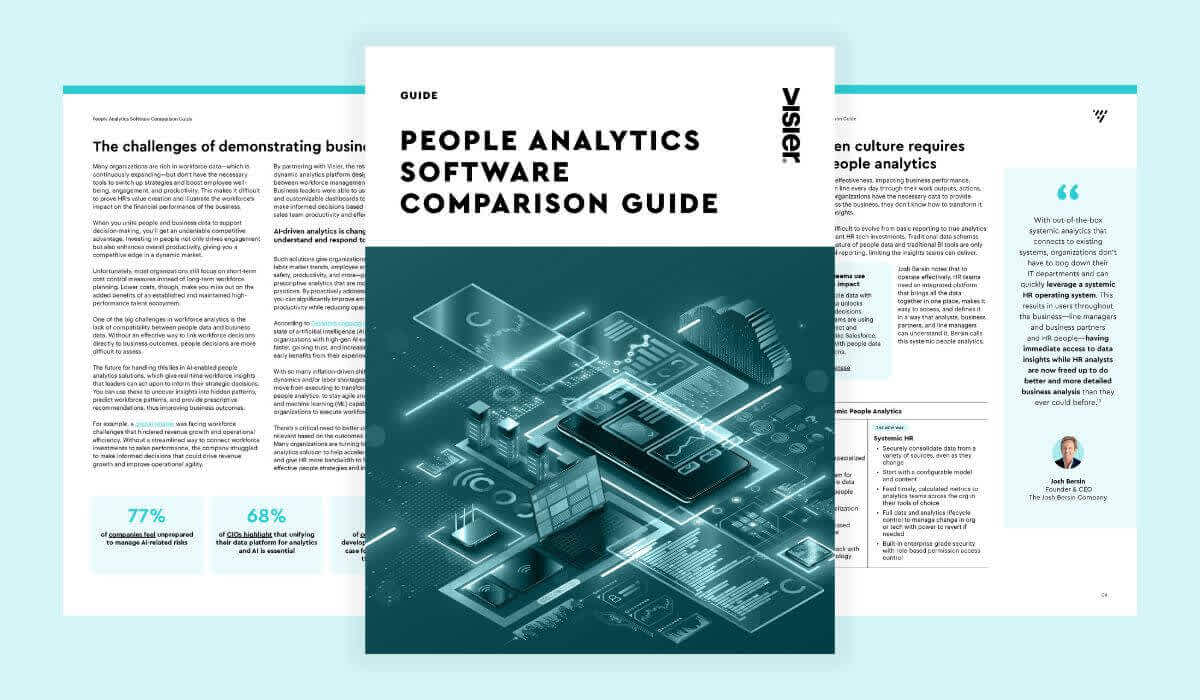3 Tiers of Building a People Analytics Strategy
Building a people analytics strategy includes three tiers: foundational management information, strategic data, and niche projects. We break them down here.

Maximizing company-wide adoption of people analytics can be a huge undertaking, and quite daunting. It can be difficult to know where to start, especially if you're aiming to gain sponsorship across the organization—that includes getting buy-in from the C-suite, HR business leaders, data teams, employees, and more.
I recently took part in a closed roundtable discussion with members of the Visier community and our VP of research and strategy, Ian Cook, to explore the typical people analytics journey. Building a people analytics strategy includes foundational management information, strategic data, and niche projects. Let's take a deeper look at these tiers here.

3 tiers of a people analytics strategy
Building a people analytics strategy starts with routinely measuring and analyzing foundational management information, followed by layering on strategic data, and finally investigating niche projects. Taking this ordered approach, you can quickly show stakeholders that your people analytics strategy starts from the outside in, establishing a solid foundation that can demonstrate value for the business as a whole. It starts with foundational management information.

1. Foundational management information
In order to effectively use people analytics, you need to establish the foundational management information stage first.
Start measuring and recording basic HR metrics regularly. This allows you to keep a steady pulse on what's happening in the business to drive the most informed decisions. This is crucial to building the necessary trust to gain broader sponsorship and expand people analytics across the business to tackle the more complex, knotty issues that increase regulatory risk, such as the gender pay gap and the effects of poor managers on retention.
Build trust in the system, trust in the data, and trust that you can do this accurately and consistently. Once you can show business leaders and stakeholders that you have this down to a science, then you can move on to using this data to make strategic decisions.
2. Strategic data
Strategic data is the component of insight that is designed to inform decisions on elements of both business and people strategy. This is where you move from simply recording and analyzing data to using it to drive the business forward.
For example, after getting their foundational management information functioning well, one company found that their high-performing talent agitated around the two-year mark. This insight helped them identify the moment in these peoples’ careers when the business was most at risk of losing them. And armed with that insight, they could get strategic.
To develop a strategy to combat this flight-risk issue, they created a simple model that asks questions like “Where are our employees on the performance scale?” and “How long have they been in that position?” As they start to approach that 24-month window, they are flagged in the system and receive a score on how close they are to that tipping point. This insight is delivered to the HR business partner and the manager, showing a list of the key talent in that window.

Upon delivery, decision-makers can begin conversations about what to do next—because the company knew that without those conversations the businesses would risk losing employees in this “agitated zone”. The example shows how moving from basic foundational management data to using strategic data shows businesses how to identify areas to focus on to reduce risk (turnover, in this case). The result is that more talent is retained in the business, saving time and money that would otherwise go into hiring, onboarding, and training new people.
To have the best impact, strategic data collection and analysis should be continuous and ongoing, and reviewed and delivered to C-level executives and stakeholders on a regular basis.
3. Niche data
Typically, this kind of project arises when there is a highly skilled individual or team that also has a high level of trust in an executive with a specific problem that they want to solve.
Niching becomes possible when you have strong sponsorship on a problem that the HR and business leadership needs solving. Often, creative thinkers are the ones that thrive within these projects. However, there's also a risk that people chase these projects because they are merely interested, and ultimately crash land when the leadership asks “What problem are you solving?”
For a niche project to succeed, you first need that interest from the upper management. You have a problem you need to solve, and you find innovative data analytics solutions to solve it. Examples of this kind of project include working out employees’ potential performance or advancement within the company. The main difference between strategic data and niche data is that niche data is net new knowledge. It’s a research project—you might discover you were wrong, but it was worth the quest.
Sometimes, when these niche projects go well, they become regular reporting priorities and slot into that strategic tier. But it’s not always a bad thing if they remain a one-off project, as long as they provide a new layer of insight that wouldn’t have otherwise been discovered. You can easily stretch resources and budgets by adopting a platform that allows you to automate the foundations, allowing you to efficiently tackle strategic and niche projects.

The bottom line
Which of these three tiers of people analytics strategy do you most often find yourself in? It’s a question worth asking if you want to support progress on people analytics in your career, your wider team, and the organization as a whole.
Remember, only by continuing to use metrics and tangible outputs to demonstrate the ROI of your work will you build the trust you need to advance.
Wherever you are on your journey, Visier is here to help you implement the people analytics capabilities you need to reach the next tier. Want to check you’ve got the basics covered? Find out the 10 metrics all HR teams should be tracking.
On the Outsmart blog, we write about workforce-related topics like what makes a good manager, how to reduce employee turnover, and reskilling employees. We also report on trending topics like ESG and EU CSRD requirements and preparing for a recession, and advise on HR best practices like how to create a strategic compensation strategy, metrics every CHRO should track, and connecting people data to business data. But if you really want to know the bread and butter of Visier, read our post about the benefits of people analytics.



